Photographing herpetofauna has its own special considerations when shooting in tropical rainforests. In this article, I will go through the various aspects of herpetofauna photography and discuss some of the challenges.
What is Herpetofauna?
Herpetofauna refers to all the animal species included in both the reptiles and amphibians categories, namely – snakes, frogs and toads, lizards and geckos, turtles, crocodiles etc. Although herps (short for herpetofauna) can be found in almost all types of habitats around the world, there are three broad types of geographical regions where their occurrence is more common that elsewhere – marshlands, deserts and tropical rainforests.
Needless to say that each of these habitat types has its own unique species and challenges. But for the sake of this article, I will only be concentrating on the tropical rainforests – mainly because that is where I captured most, if not all of my herp shots.
Herpetofauna Genre
The herpetofauna genre falls under the broad genre of wildlife photography. However, the subjects involved have a wide variation in size, ranging from tiny frogs / tadpoles to huge reptiles. As such, the actual photography technique may follow either wildlife photography or other genres like portrait or macro photography.
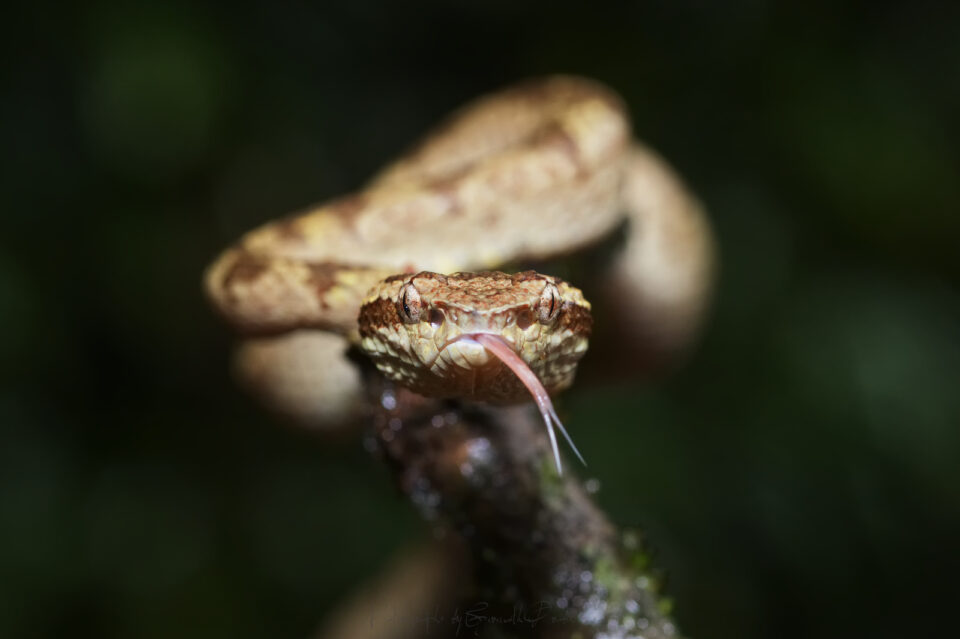
NIKON D500 + 105mm f/2.8 @ 105mm, ISO 800, 1/250, f/11.0
Herpetofauna Photography Challenges
Those who have been to any of the rainforests will agree that they are quite unique – moist, mystical, magical and creepy at the same time. Firstly, it has a dense canopy of trees, limiting the amount of ambient light even during daytime. Also, the outgrowth is so dense at places, that it might obscure the trails partially. In addition to that, most of the herps are nocturnal creatures. All these conditions combined present some unique challenges in photography. I am going to outline the major ones below.
- Availability of Light. Lack of light is a serious issue almost all the time, unless you get lucky to get a subject in an open area in daylight. You will need to be prepared with a mix of natural and artificial light, or potentially even fully artificial light.
- Locating Subjects. Finding subjects that are fantastically camouflaged in the dense foliage and correctly identifying them is a huge challenge. This takes special skills which you likely do not possess. So it bodes quite well to have an expert with you. It can be a local person or a herping expert – this alone will increase your chances of getting good photographs.
- Keeping Yourself Safe. Protecting yourself from the elements is a reasonable concern. Rains can descend unannounced, and there will not be any shelter available obviously, so be prepared with suitable rain gear. Also, you may have to wade through streams in search of subjects, so be careful on slippery surfaces.
- Protecting Yourself from Harmful Creatures. Snakes, although the most threatening of these, are not the only ones here. These can range from the abundant mosquitoes, to leeches, to venomous creatures. Again, wearing suitable clothing to cover full body, staying on well-marked trails and having an expert with you are a must.
- Protecting Camera Gear. Protecting your camera gear from the elements and from falls is also very important. Having a rain cover helps, and so does avoiding to change lenses in the field.

NIKON D500 + 105mm f/2.8 @ 105mm, ISO 800, 1/250, f/11.0
Describing these challenges and overcoming them is a lengthy discussion in itself and I may try to address them in-depth in a separate article.
Camera Gear Considerations
Camera and Lens
You can very well photograph herps with a point-and-shoot camera that has a decent zoom capability, say 5x or so, or, depending on the subject, even your smartphone.
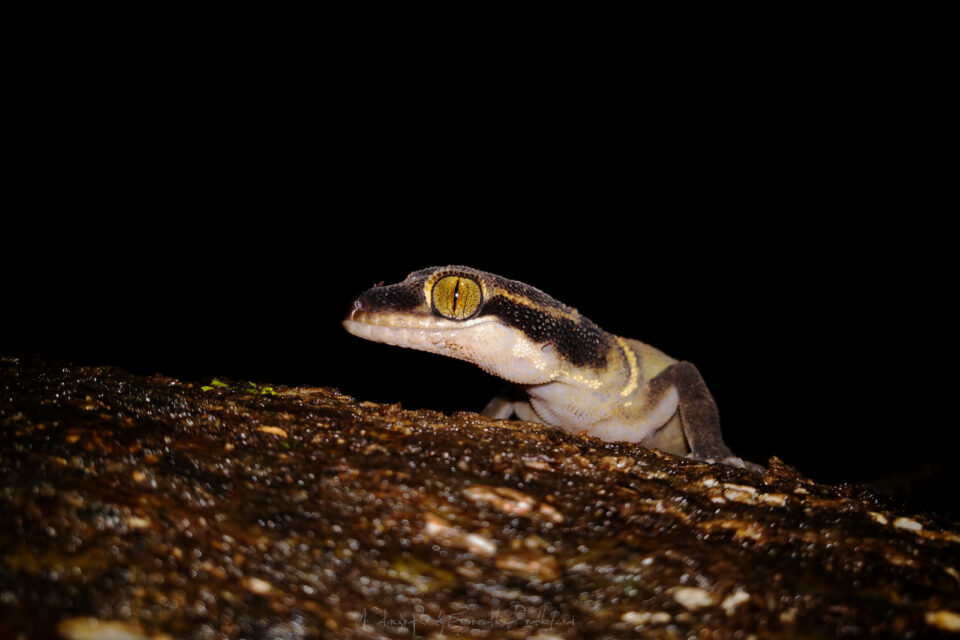
DUK-L09 @ 3.8mm, ISO 457, 1/24, f/2.2
However, there will be limitations on the quality of photographs because of one significant reason – light availability. Therefore, it is always better to have a camera that will do well in low-light situations.
The weapon of choice, thus, is a DSLR or a mirrorless camera. Full-frame cameras are better, but modern APS-C sensor cameras are quite capable too. Also, a fast lens (one with a large maximum aperture like f/2.8 or larger) is also advisable due to same reasons.
Using a macro lens with around 100 mm focal length is particularly advantageous, since it gives you reasonable reach and you can get quite close to really tiny subjects too. They also generally produce very nice bokeh.
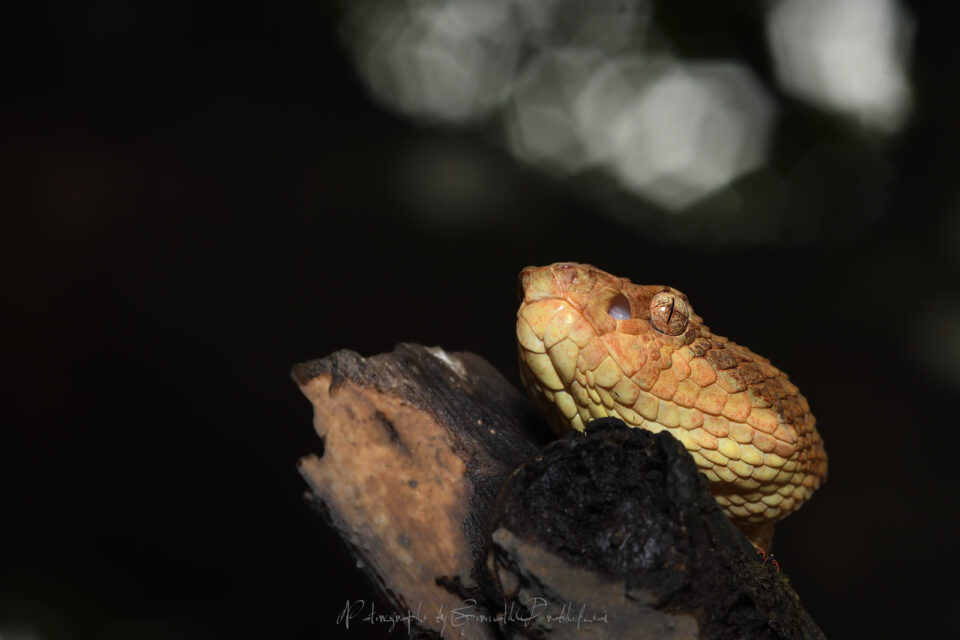
NIKON D500 + 105mm f/2.8 @ 105mm, ISO 800, 1/250, f/11.0
On the other hand, if you have an ultra-wide angle macro lens like the Laowa 15 mm f/4, or any wide angle lens which can focus decently close, you can take some amazing wide angle shots showing the habitat along with the subject. Of course, this can only be done during daytime when there is adequate light.
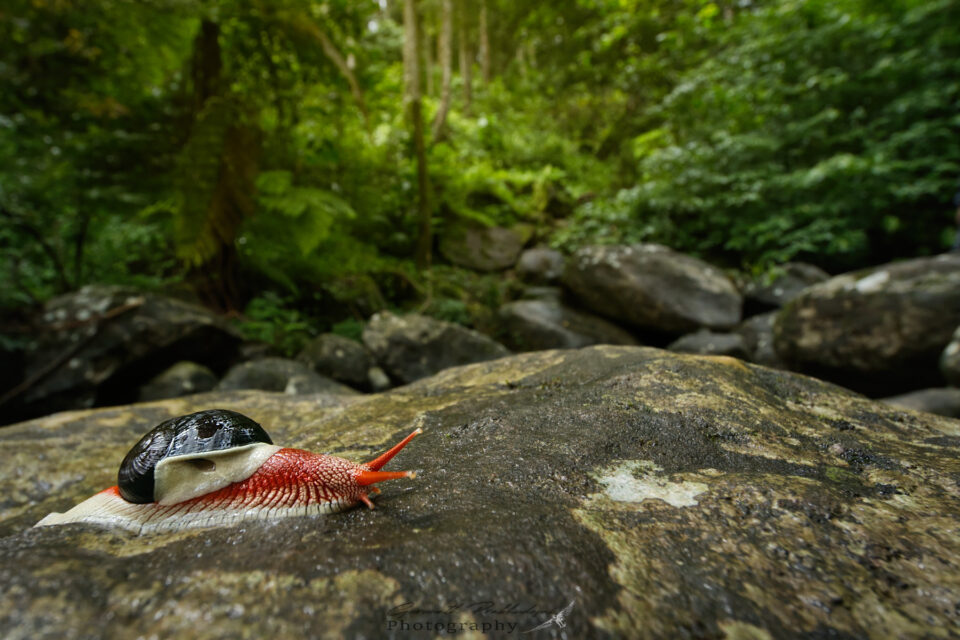
NIKON D500 + 12-24mm f/4 @ 14mm, ISO 800, 1/500, f/8.0
I personally shoot with the Nikon D500 coupled with an older Nikkor micro 105mm f/2.8D lens. It doesn’t have vibration reduction, but coupled with flash, that is not a hindrance most of the time.
Accessories
In most cases, due to reasons mentioned above, you will also need a flash. The built-in flash can be adequate sometimes, but as in the case of portraits, it will result in harsh, unpleasant shadows. You can use a diffuser (available online quite cheap, or you can make one yourself) to alleviate that issue, but it presents another issue. Location of the built-in flash is fixed, so you are quite limited in the amount of diffusion and creativity. Moreover, in case of very small subjects, your lens may cast a shadow on the subject.
Again, an external flash, either a camera-mounted or a remote triggered one can change lighting dramatically, improving image quality immediately. In case of remote triggered flash, it can actually open doors for creative lighting situations, just as in portrait photography. It goes without saying that any kind of flash will need a good diffuser / bounce card or a combination of them.
There are specific macro-oriented flashes available on the market viz. a ring flash or a twin flash like the Nikon R1C1 or the Canon MT-26EX-RT. However, both Nikon and Canon flashes cost a fortune, and I would only advise it for people who are really into macro photography. A nice alternative to that has been introduced in the market recently by the Chinese brand Meike with reasonably good reviews, but I have no experience of using it.
As for ring flashes, there are many third party options and some of them are quite cheap. However, the cheaper ones generally don’t have enough power to provide the desired illumination, so I would be wary of using them.
As of now, I use a simple manual camera mounted flash with either a bounce card or a DIY diffuser. I still have not decided whether to upgrade to a sophisticated TTL flash or a special macro flash, as I am only a hobbyist photographer. Also, macro or herp photography for us in India is limited mainly to about 3 months of monsoons every year.
In addition to flash, you will need a few more items such as:
- An umbrella to protect yourself and your gear from rain.
- A flashlight to find your way / subjects.
- Proper rainwear to keep you dry and to improve maneuverability.
- Shoes with good grip. Waders / gumboots are excellent provided they come with a grippy sole.
- Rainproof camera bag or at least a good rain cover for the camera bag.
Additional Tips
As with any wildlife photography, try to capture the natural behavior or action, if possible. That means hunting, mating, mating displays, laying eggs etc. Of course, you need luck to be able to witness these activities, but such images are a lot more interesting than standard ones you see every day.

NIKON D500 + 105mm f/2.8 @ 105mm, ISO 1600, 1/250, f/8.0
Again, similar to wildlife photography, try to capture your subjects at their eye level. For herps, this will sometimes mean getting down, dirty and wet on the ground, since many of the subjects are ground dwelling.
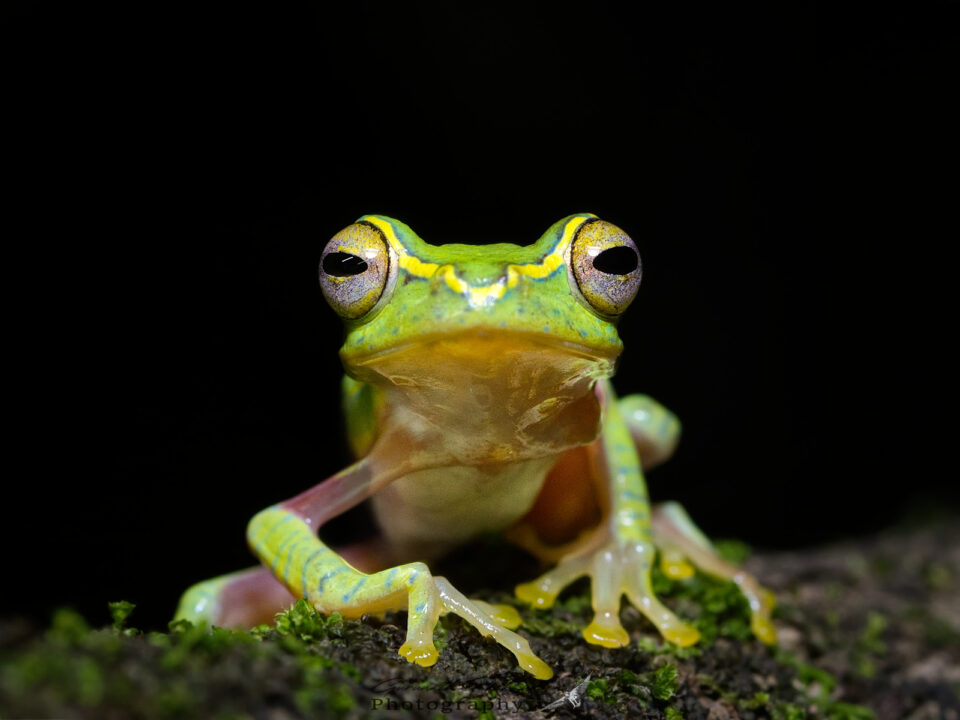
NIKON D500 + 105mm f/2.8 @ 105mm, ISO 1600, 1/60, f/16.0
Though your intention is to shoot herps, you will likely come across other interesting creatures such as gastropods like snails or slugs and scorpions, spiders, giant moths etc. Many of them will be quite unique to the region you are exploring, so keep an open eye and mind, and enjoy capturing those beauties too.
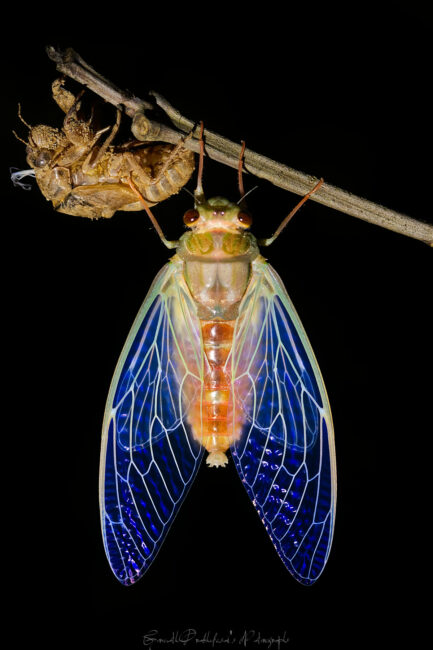
NIKON D500 + 105mm f/2.8 @ 105mm, ISO 640, 1/500, f/8.0
For these trails, I would strongly advise to go around in small groups of 3-5 people, including a guide or an expert. This will ensure better spotting of species, as well as flexibility to shoot (one or two persons can take turns holding diffusers, while others shoot). More than 5 will likely be somewhat chaotic, as the group is more likely to split while wandering around. With everyone trying to get a good shot, they will most likely end up with others in the frame, along with the subject.
Summary
I personally consider herpetofauna to be a separate genre of photography, because of all the unique considerations that I have tried to list in this article. It is quite tough – many times you’ll have to wander in search of species, or wait for specific behavior very late into the night, braving the rain. But when you get unique photos of some unique species, it all is worth it in the end!
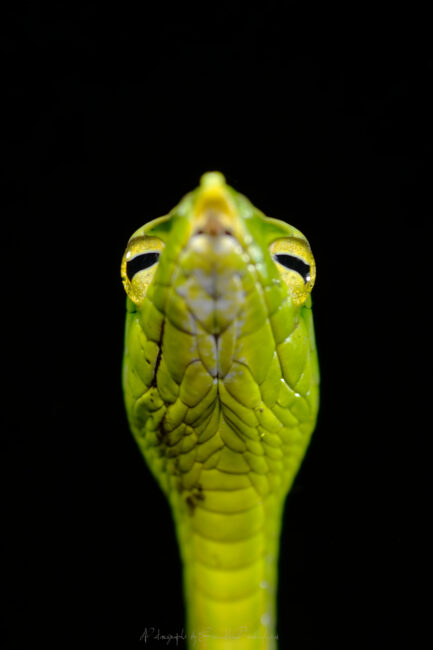
NIKON D500 + 105mm f/2.8 @ 105mm, ISO 100, 1/125, f/11.0
Even if you do not get the photos you want, getting to know the practically unseen and unnoticed world out there, is an experience on its own, every time.
I hope you enjoyed reading this article. I hope that some of you will get the inspiration to venture into this genre. I also understand that amongst the readers there may be persons with far greater experience than me, so if you have any questions or feedback, or just want to share some photos, please feel free to use the comments section below.